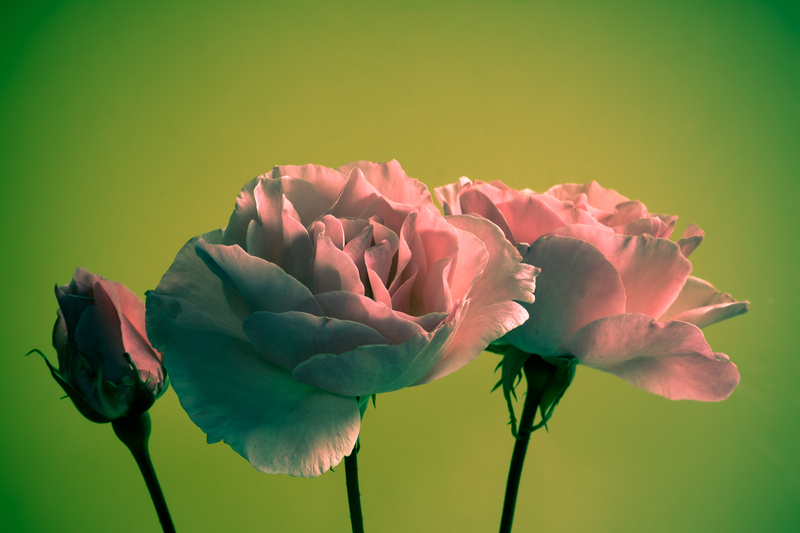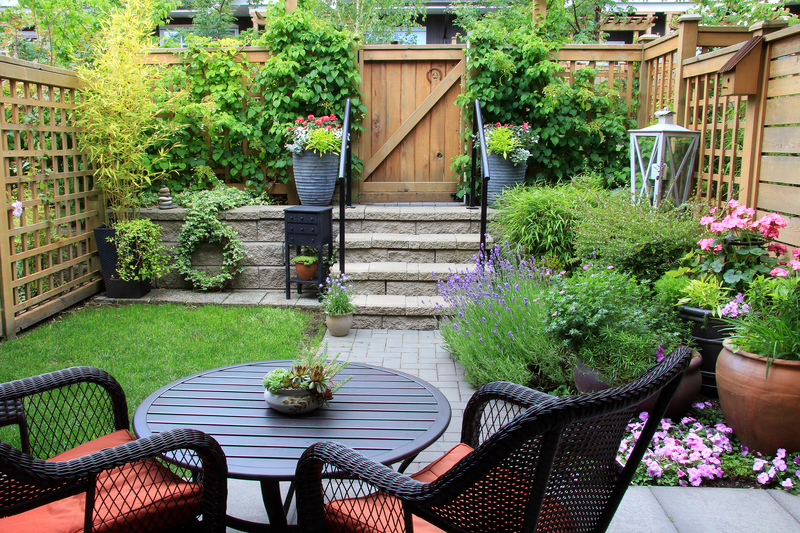Small-Space Gardeners' Guide to the Best Evergreen Trees
Evergreen trees are a gardener's ally, providing beauty, privacy, and year-round greenery. But when space is at a premium, choosing the right type of evergreen for your small garden, patio, or balcony becomes a creative and practical pursuit. This comprehensive guide is tailored for urban gardeners and those who cherish lush landscapes in compact quarters. Let's explore the best evergreen trees for small spaces, along with tips for selection, planting, and ongoing care.
Why Grow Evergreens in Small Spaces?
- Year-Round Interest: Unlike deciduous species that shed their leaves, evergreens keep your landscape lively month after month.
- Privacy Screening: Strategic planting can soften fences or block unwanted views for intimate outdoor living.
- Low Maintenance: Many compact evergreens are slow-growing and require minimal pruning.
- Wildlife Habitat: These trees provide shelter and food for birds and pollinators, even in urban environments.
With the right small evergreens, you can transform a tiny plot into a green sanctuary.

Key Considerations for Choosing Small-Space Evergreens
Selecting the best evergreen trees for small gardens includes weighing several factors:
- Mature Size: Always check the projected height and width. Dwarf or compact varieties are ideal for small areas.
- Growth Rate: Slower growers are easier to manage and maintain shape.
- Root System: Look for non-invasive roots, especially when planting near walls or paving.
- Sunlight & Soil: Consider light and soil conditions to select the best species for your site.
- Container Suitability: Some evergreens thrive in pots, perfect for patios or balconies.
Top 10 Evergreen Trees for Small Gardens
Not all evergreens grow into towering giants. Here's a curated list of the best compact evergreen trees for limited spaces:
1. Dwarf Alberta Spruce (Picea glauca 'Conica')
- Height & Width: Slowly reaches 6-8 feet high, 3-5 feet wide
- Growth Rate: Very slow, easily maintained as a tight cone shape
- Ideal Use: Foundation plantings, containers, formal gardens
- Care Tips: Prefers full sun, moderately moist soils, and benefits from occasional mulching
This tree's elegant, dense form makes it a standout for small-space landscapes and front entrances. Dwarf Alberta Spruce are also highly popular as living Christmas trees!
2. Japanese Holly (Ilex crenata)
- Height & Width: 3-10 feet tall, can be clipped smaller
- Notable Feature: Looks like boxwood, but with tiny glossy leaves
- Growth Habit: Compact and versatile--perfect for hedges and topiary
- Care Needs: Thrives in partial to full sun adaptably
Japanese holly is a fantastic option for urban courtyards or as a living low hedge on balconies.
3. Sky Pencil Holly (Ilex crenata 'Sky Pencil')
- Distinctive Vertical Accent: Grows tall and very narrow--2-4 feet wide and up to 8 feet high
- Unique Appeal: Ideal for entrances, tight corners, and container groupings
- Care: Needs little pruning to retain its pillar-like form
One of the best columnar evergreens for small spaces, bringing elegance and drama wherever space is limited.
4. Dwarf Hinoki Cypress (Chamaecyparis obtusa 'Nana Gracilis')
- Height: Typically stays below 6 feet, compact and slow-growing
- Wonderful Texture: Rich green, scalloped foliage adds a softening touch
- Best For: Zen or Asian-inspired gardens, shaded containers
This cypress's lush, fine-textured needles are visually captivating and softly aromatic. Dwarf Hinoki Cypress excels in partially shaded courtyards or patios.
5. Boxwood (Buxus varieties)
- Mature Size: Extensive range--dwarf types like 'Green Gem' and 'Winter Gem' stay under 3 feet
- Classic Garden Plant: Excellent for formal shapes, borders, or urban knot gardens
- Container-Friendly: Holiday topiary or year-round structure
While not a traditional tree, boxwood's evergreen foliage and flexibility in pruning make it a small-garden staple.
6. Dwarf Southern Magnolia (Magnolia grandiflora 'Little Gem')
- Small-Space Star: Reaches about 8-12 feet, stays slim
- Showy Blooms: Large, fragrant white flowers in late spring and sporadically through the season
- Evergreen Charm: Glossy, dark green leaves with rusty undersides for year-round appeal
'Little Gem' is ideal for small yards or as a striking, scented specimen in pots. Its southern heritage is perfect for mild-winter regions.
7. Mugo Pine (Pinus mugo 'Compacta')
- Grows Well in Rocky or Sandy Soil: Drought-tolerant and tough
- Compact Form: Grows up to 3-5 feet high and wide
Mugo pine is great for rock gardens, raised beds, or containers--its bold, rugged look pairs well with contemporary landscapes.
8. Lemon Cypress (Cupressus macrocarpa 'Goldcrest')
- Sun-loving: Prefers bright spots, can handle partial shade
- Striking Chartreuse Foliage: Adds color contrast all year
- Compact Size: Often kept pruned to 4-6 feet in containers
This citrus-scented evergreen functions as a vivid accent tree for entryways or small patios.
9. Korean Fir (Abies koreana)
- Compact & Hardy: Most varieties mature at 6-12 feet tall
- Ornamental Cones: Striking purple or blue cones stand upright
- Best Fit: Cool climates and shady corners
The Korean fir is a showstopper for its unique cones and tidy growth--excellent for small yards or even large containers.
10. Olive Tree (Olea europaea)
- Mediterranean Flair: Reaches only 5-10 feet in containers
- Versatile: Grows well in pots, perfect for terraces and balconies
- Evergreen: Silvery-gray foliage offers year-round interest
While technically not a conifer, the olive tree is a beloved evergreen tree for modern, sunny small spaces--plus, you might even harvest your own olives!
How to Plant and Care for Evergreens in Small Spaces
Planting Tips for Small Gardens & Containers
- Container Choice: Pick generous, well-draining pots for strong root growth if you're planting on a balcony or patio.
- Soil: Use high-quality potting mix or well-amended garden soil with organic matter for in-ground planting.
- Placement: Most evergreens enjoy full to partial sun; check the species for specific needs.
- Watering: Keep soil lightly moist during the first year; after establishment, many evergreens are drought-tolerant.
- Mulching: A 2-3-inch layer of compost or bark helps retain moisture and maintain even temperatures.
Caring for Small Evergreen Trees Year-Round
- Pruning: Dwarf evergreens need little pruning--remove dead or crowded branches after winter.
- Fertilizing: Use a slow-release, balanced fertilizer in early spring to encourage lush growth.
- Protection: If in a pot, move less hardy types to a sheltered spot when severe frost threatens.
- Pest & Disease Monitoring: Keep an eye out for scale, mites, or fungal issues--prompt treatment maintains plant health.
Design Ideas: Making the Most of Evergreens in Small Gardens
Evergreen trees aren't just practical--they're also beautiful sculptural focal points. Consider these design strategies:
- Vertical Accents: Columnar evergreens like Sky Pencil Holly or Italian Cypress draw the eye upward, maximizing visual space.
- Textural Layers: Pair evergreens of varying forms with perennials or ornamental grasses for all-season interest.
- Potted Evergreens: Use elegant containers flanking an entrance, scattered on decks, or as anchors in a mixed plant arrangement.
- Hedges & Backdrops: Low-growing species like boxwood create living boundaries without dominating the garden.
- Themed Gardens: Craft a mini Mediterranean garden with an olive tree, lavender, and rosemary, or try a Japanese-inspired vignette with dwarf pines and Hinoki cypress.
Winter Interest & All-Season Value
Small evergreens lend structure and color when most other plants are dormant. Adding a few strategically placed, cold-hardy evergreens ensures your garden looks lively, even in the depths of winter. Look for varieties with colorful bark, berries, or unusual foliage for a dynamic effect as the seasons change.

Frequently Asked Questions About Small Evergreen Trees
Can evergreen trees be grown indoors?
Some compact, slow-growing evergreens such as Dwarf Alberta Spruce or Lemon Cypress can adapt to bright indoor spaces for short periods. However, most require outdoor conditions--and at least a dormant winter period--to thrive long-term.
How often should I water my potted evergreen tree?
Potted evergreen trees dry out faster than those in the ground. During active growth (spring and summer), water when the top inch of soil feels dry. In winter, reduce watering, but don't allow the root ball to dry out completely.
Which evergreen tree is best for privacy in small gardens?
Sky Pencil Holly and Dwarf Thuja (such as 'Little Giant' arborvitae) are top picks for narrow privacy screens in urban spaces due to their upright, dense growth habits.
Can I prune my evergreen tree to keep it smaller?
Yes! Many dwarf evergreens respond well to light pruning in early spring. Avoid hard pruning of conifers, especially into old wood, as they may not recover.
Is there an evergreen tree that grows in shade?
Dwarf Yew (Taxus), Japanese Holly, and Holly Fern tolerate partial to full shade. Ensure adequate moisture and avoid waterlogged soil for best results.
Conclusion: Creating a Green Oasis in Compact Spaces
Choosing the best evergreen trees for a small garden is both an art and a science. With careful selection and mindful planting, even the tiniest plot or patio can become a lush, private retreat that thrives all year round. From tidy Dwarf Alberta Spruce to structural Sky Pencil Holly and Mediterranean olive trees, the options are as diverse as your personal style. Remember, even a single small-space evergreen can make a dramatic impact--offering shade, wildlife value, and lasting beauty to cherish through all seasons.
Whether you have a balcony, courtyard, petite patio, or a postage-stamp garden, integrating compact evergreen trees will elevate your outdoor space--proving that you don't need a large yard to enjoy the enduring grace and green luxury of evergreens.